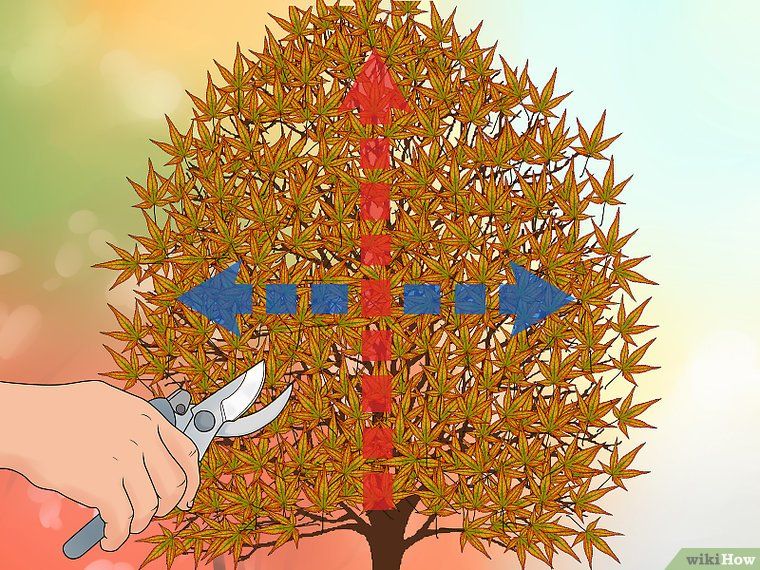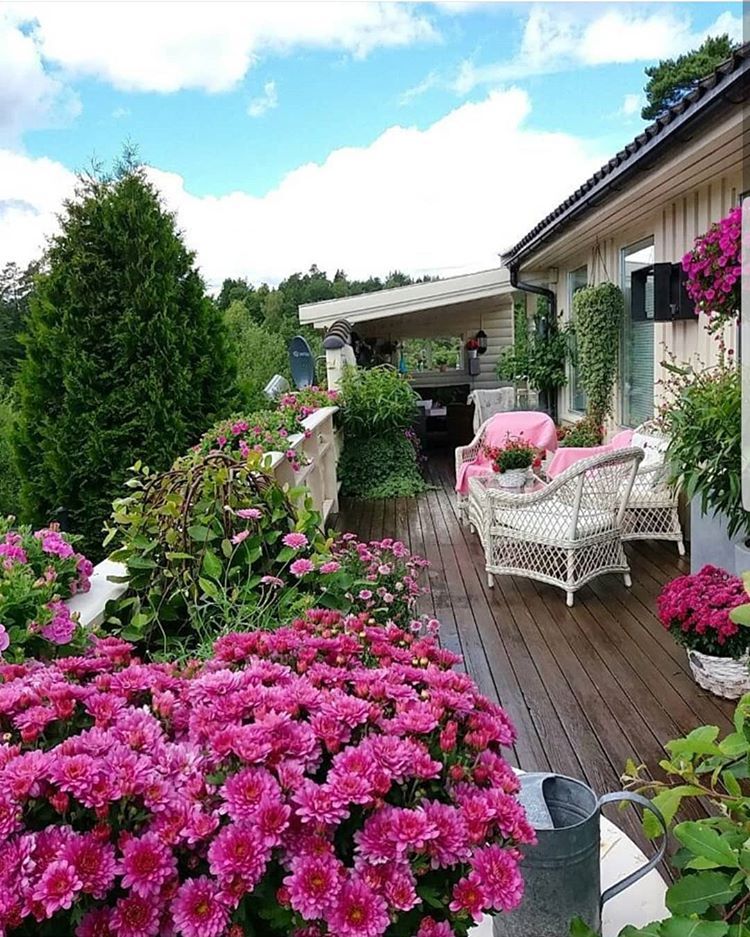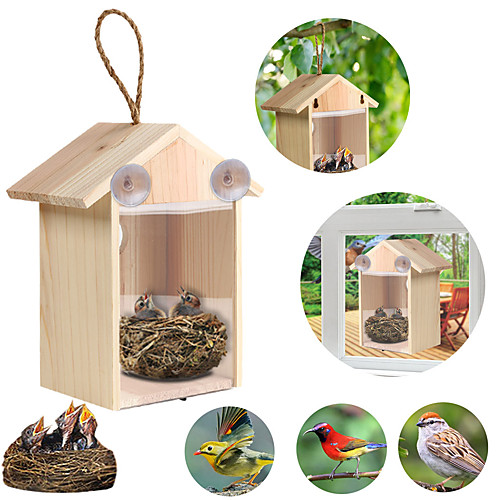Deer safe plants
17 shrubs, perennials and annuals |
(Image credit: Robert Muckley / Getty Images)
If deer are prevalent in your area, then deer resistant plants are an essential addition to your garden.
While deer are shy animals, when hungry they will often stray into gardens and eat prized plants – putting a huge dent in your backyard ideas.
‘One thing to keep in mind is that if the deer are hungry, they will eat just about anything. So even though a plant may be considered deer resistant, it may still be targeted,’ says Jo Ellen Meyers-Sharp, gardening coach and creator of Hoosiergardener , and a member of the National Garden Bureau .
This makes it important to also consider how hardy your plants are, and whether they will easily recover from a deer munching session.
‘Gardeners don’t spend money on their plants to have them be a salad bar for deer, so many gardeners use repellents to keep deer away.’
While you can’t create a 100 per cent deer-proof garden, there is a wide voice of deer resistant plants available to help deter them and minimize any damage.
Best deer resistant plants
Whether you are looking for evergreen shrubs to serve as the backbone of your garden scheme, or annuals to fill in gaps in pots and borders, there are some wonderful deer resistant plants to choose from.
We asked the experts for their top picks.
Deer resistant shrubs
Shrubs provide much of the structure and interest in our gardens year round. Some are evergreen, adding color and interest in every season.
1. Panicle hydrangea
(Image credit: Getty Images)
Panicle hydrangeas – or Hydrangea paniculata – are moderately fast-growing shrubs that are not favored by deer. However, even if they do have a munch, the plants are hardy, so should recover well.
‘Panicle hydrangeas have flowers in the white to pink to light red range. They bloom during the summer months and the flowers last through fall, typically fading to a handsome light tan as temperatures drop before winter,’ says Sam Schmitz, horticulturist for Ball Horticulture .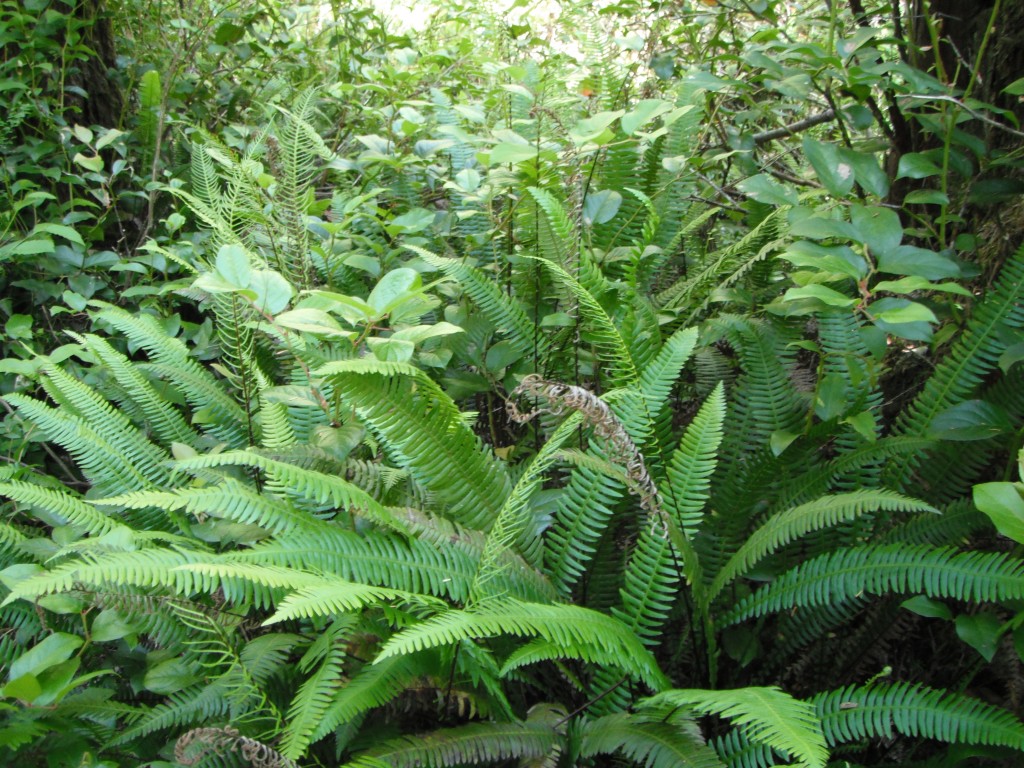
‘There are many different varieties that range in mature size from 2ft x 2ft to 8ftx8ft. These shrubs are best in full sun but can also tolerate light shade.’
Make sure you know how to grow hydrangeas to get the best out of them.
2. Osmanthus
(Image credit: Clive Nichols / Getty Images)
‘Osmanthus is an easy-to-grow shrub that can tolerate many different soils and light levels. It is often used for hedging and privacy screens,’ says Michael Giannelli of East Hampton Gardens .
It produces a cluster of tiny white flowers that emit a sweet fragrance similar to magnolias and gardenias.
Its scent and the plant’s spiny leaves also make it unappealing to deer. ‘This has the consequence of making them difficult to handle, although there are smoother varieties available, like Carl Wheeler,’ adds Giannelli.
You can grow osmanthus in USDA zones 7-10.
3. Lavender
(Image credit: Adrian Wombwell / Getty Images)
Lavender’s scent may be heavenly to us, but deer tend to dislike it, making it an ideal shrub for your garden.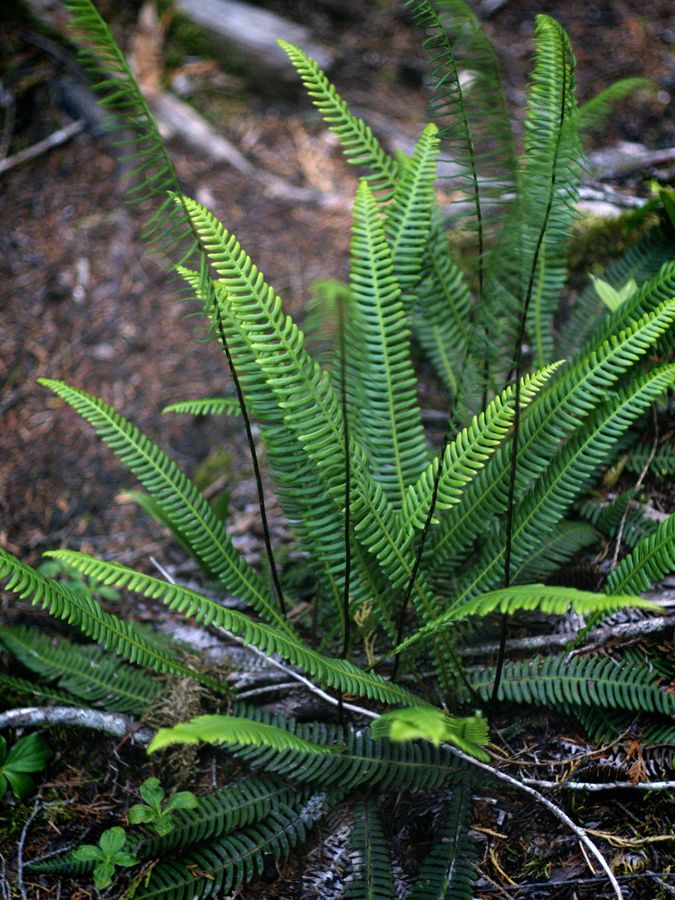
‘Lavender grows best in well-drained soil with full sun exposure,’ says Lindsey Hyland, founder of Urban Organic Yield .
‘It does not require a lot of maintenance, but can sometimes be susceptible to pests like mites and aphids.’
Learning how to grow lavender is easy for gardeners in most climates, however the plant dislikes humidity. Expect to be able to grow it in zones 5a to 9a.
4. Ninebark
(Image credit: Getty Images)
Ninebark – or Physocarpus opulifolius – is a fast-growing, medium to large shrub that typically produces frothy white flowers in late spring and early summer.
‘To add to this, the plants come in foliage colors of bronze-red, burgundy, purple, chartreuse, and a few others,’ says Schmitz. ‘
'These shrubs are quite lovely and very easy to maintain. They are happiest planted in full sun but can tolerate a few hours of shade a day.’
Ninebark is also a great choice for colder climates, and can be planted in USDA zones 2-7.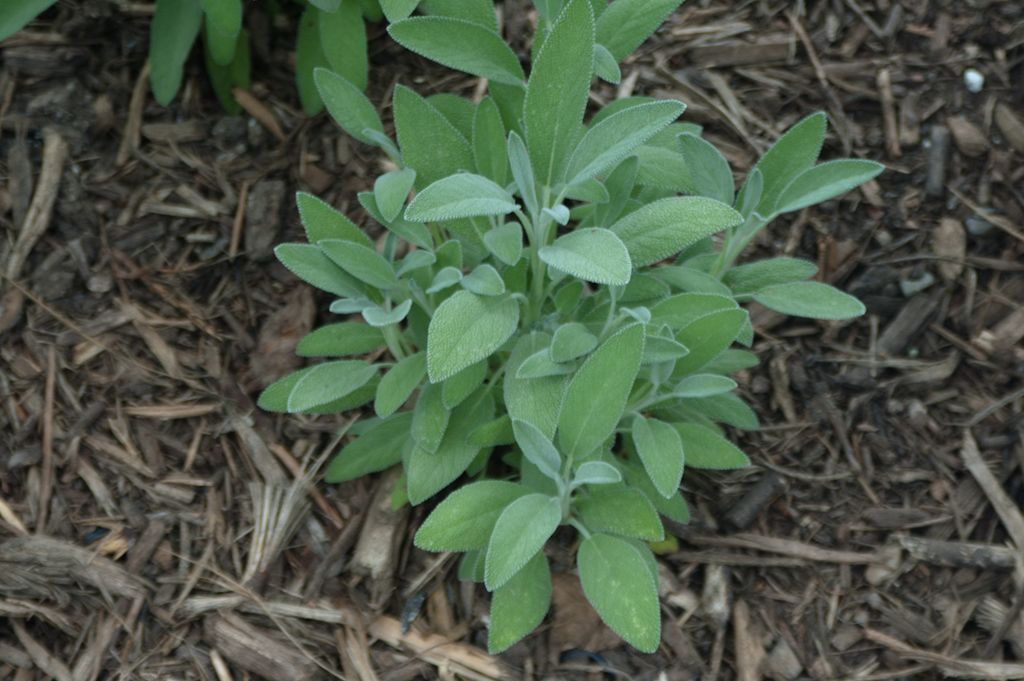
5. Japanese andromeda
(Image credit: Getty Images)
Japanese andromeda – or pieris – has a distinctive scent that some gardeners like and others avoid – however, it smells particularly unpleasant to deer.
‘Andromeda is sometimes referred to as the lily of the valley plant as its early spring flowers look similar,’ says Giannelli
‘It is a great evergreen shrub that changes color as the season progresses, setting long clusters of buds in fall for great winter interest.’
However, bear in mind that andromeda are fussy about soil type. ’They need very well-drained acidic soil,’ adds Giannelli.
If your soil is more alkaline, then the best thing to do is to grow them in containers. They should thrive in USDA zones 5-8.
6. Red twig dogwood
(Image credit: Leigh Clapp)
'Red twig dogwoods are mainly grown for their attractive foliage and bright red stems,’ says Schmitz. These particularly come into their own in winter.
The shrubs are deer resistant plants, but if deer do try to eat them, the good news is that red twig dogwoods are fast growing and tolerate harsh pruning, meaning they will easily spring back.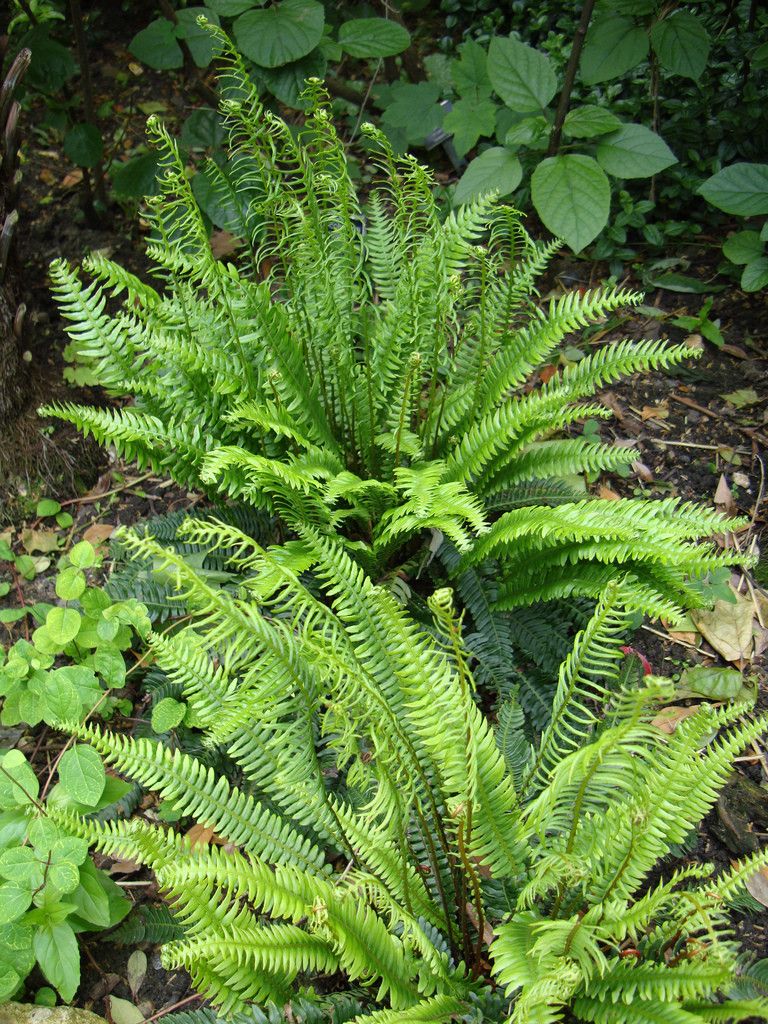
‘They are adaptable to a number of environmental conditions. You can grow them in full sun or up to 50 per cent shade,’ adds Schmitz.
‘Bear in mind that red twig dogwoods can become large over time, but maintaining their size is simple. These can be pruned any time of the year and can be transplanted quite easily.’
Keep on top of maintenance by removing old or diseased canes and keep the shrub looking tidy.
Grow them in USDA zones 3-8, and also consider other types of dogwoods that can be used, which range from medium shrubs to small trees.
Deer resistant perennials
There are many deer resistant perennials available that will make a beautiful feature in your borders. Discover the experts' top picks.
1. Buddleia
(Image credit: Getty Images)
Also known as butterfly bushes for being highly attractive to these precious pollinators, buddleia are not appealing to deer.
‘Though shrubs, buddleia behave more like woody perennials, as in colder areas they dye back almost to the ground each winter and regrow their full size through the season,’ explains Schmitz.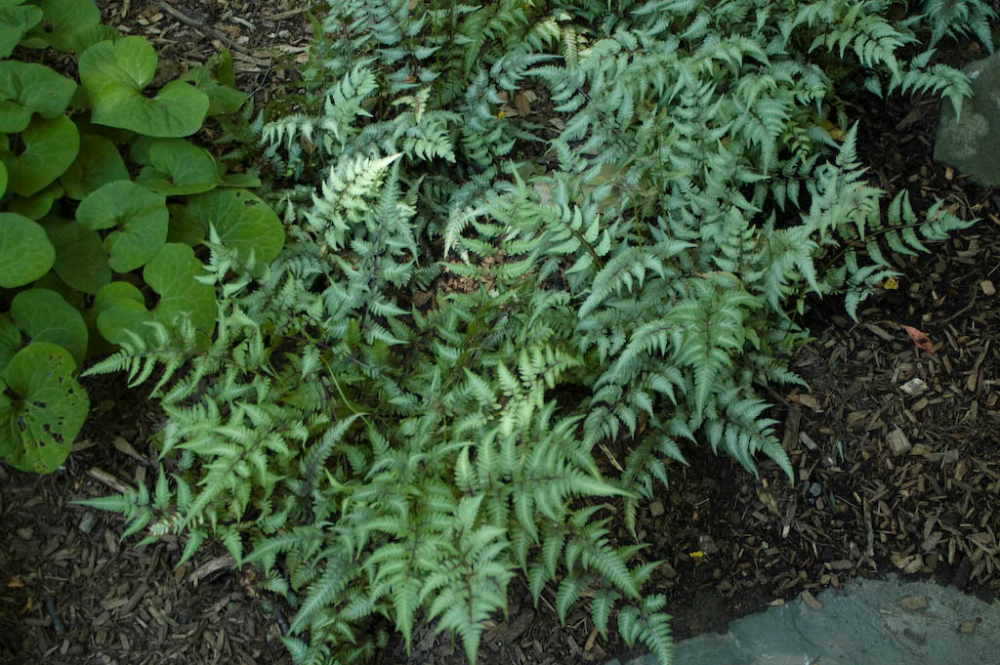
If the plant doesn’t completely die back, it’s a good idea to cut it right back anyway.
‘They grow quickly as they come back up and can reach 6-7 foot tall in a single season. The flowers can be white, blue, cranberry, purple, lavender, and pink with many shades in between.’
Buddleia require full sun in order to thrive, and can be grown in USDA zones 4-10, depending on the variety.
As it grows so fast, ensure you know how to prune buddleia to keep it under control and looking its best.
2. Purple coneflower
(Image credit: Getty Images)
Also known as echinacea, purple coneflower is a popular plant among pollinators – but its fragrance and spiny center make it unappealing to deer.
‘A native perennial, purple coneflower prefers moist, well-drained soils but is drought tolerant once established,’ says Millie Davenport, director of the Clemson Extension Home and Garden Information Center .
The plants die back to the ground over winter, and can grow up to 4 feet tall in the growing season.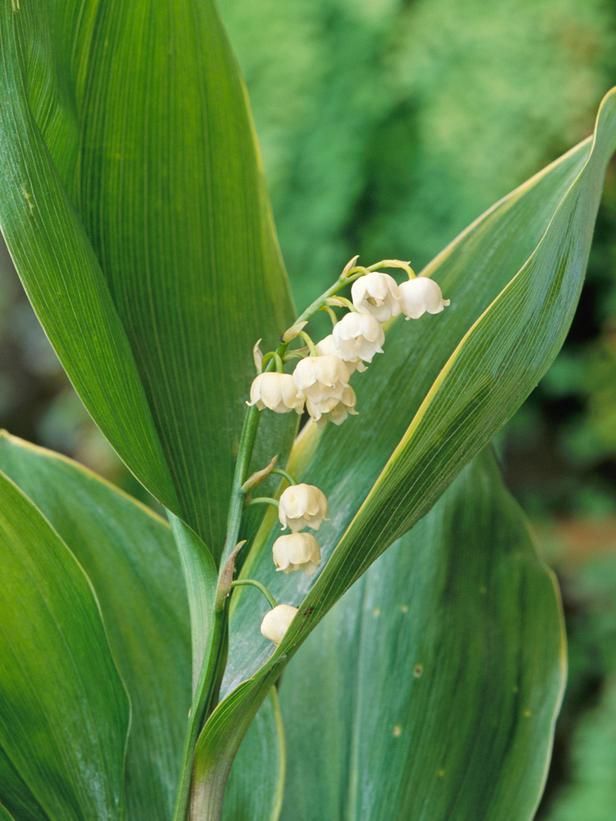
‘Not only a great nectar source for pollinating insects, birds also enjoy the seedheads of purple coneflower in the fall,’ adds Davenport.
You should be able to grow purple coneflower in USDA zones 3-9.
3. Bearded iris
(Image credit: Unsplash)
The scent and taste of bearded iris is unpalatable to deer, but its exotic-looking blooms are a beautiful addition to the spring and summer garden.
‘Some varieties, such as Immortality, rebloom in late summer and early fall,’ says Meyers-Sharp.
‘Each flower can be one color or it can have two or more colors.’
You can grow bearded iris in a sunny spot in well-draining soil, in USDA zones 3-9 – learn how to grow irises properly to make sure they flower.
‘Cut back the leaves in the fall,’ adds Meyers-Sharp. ‘When planting, make sure the rhizome (underground stem) is right at, or slightly above the soil surface. If planted too deep, the iris will not bloom.’
4. Baptisia
(Image credit: Getty Images)
'Baptista – or false indigo – is a perennial herb native to much of central and eastern North America, and is a great deer resistant plant,’ says Davenport.
It prefers moist, well-drained soil but is drought tolerant once established. You should be able to grow it in zones 5-9.
‘Though disliked by deer, it is a host plant for the larvae of several butterfly species, including orange sulphur, clouded sulphur, frosted elfin, eastern tailed blue, hoary edge, and wild indigo duskywing,’ adds Davenport.
Deer resistant annuals
Don't forget annuals when choosing deer resistant plants for your garden – these are ideal for filling in gaps and many have a long flowering season.
1. Cosmos
(Image credit: Thompson & Morgan)
Not only are cosmos deer resistant plants, but they are beloved of pollinators, make great cut flowers, and fill out summer borders wonderfully.
‘Cosmos are beautiful airy plants that thrive in full sun, although they’re fine with some shade too,’ says Teri Knight, radio show presenter, and founder of the Garden Bite podcast and website .
‘They are easy to grow handling hot, dry conditions, and you can grow them from seed or potted plants.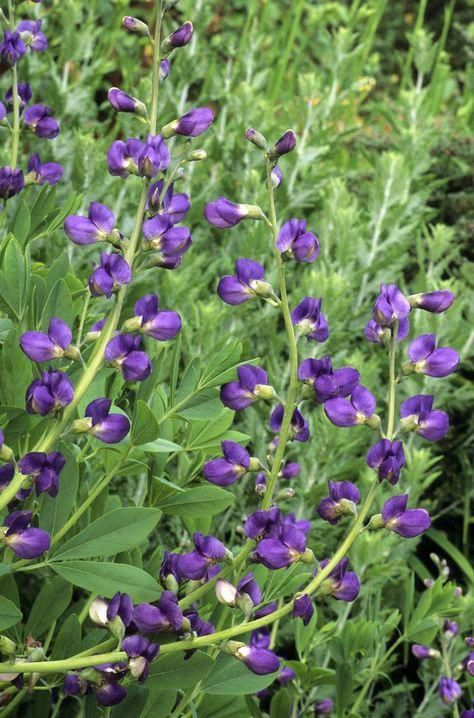 ’
’
It’s so easy to learn how to grow cosmos as an annual in most climates, and they make such an impact in the garden. Choose from dazzling pinks through buttercup yellow and purest white.
2. Flowering tobacco
(Image credit: Getty Images)
‘Flowering tobacco – or Nicotiana alata – has wonderfully fragrant flowers, especially at night, so plant in a sunny area where you can enjoy the perfume,’ says Meyers-Sharp.
However, deer won’t enjoy their heavenly fragrance quite so much, which makes them a great deer resistant plant.
‘Hummingbirds, hummingbird moths and other night pollinators also visit these native plants,’ adds Meyers-Sharp.
‘Nicotiana sylvestris, or woodland flowering tobacco, tolerates shade and is also fragrant.’
As old-fashioned plants, flowering tobacco are also a great addition to your cottage garden ideas, working well in borders and containers.
3. Dusty miller
(Image credit: Getty Images)
Though technically a herbaceous perennial, dusty miller – or Senecio cineraria – is usually grown as an annual, and is prized for its silvery grey foliage that acts as the perfect foil for nearby flowers.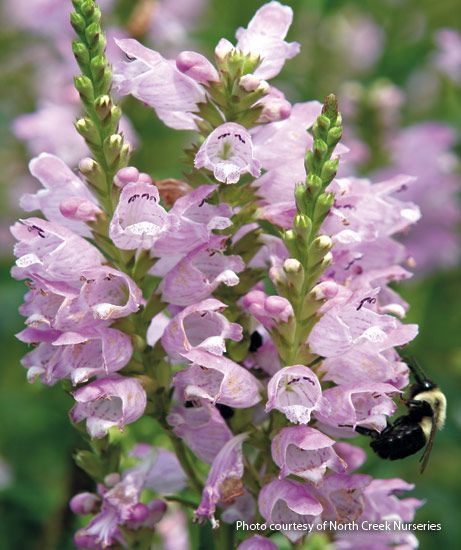
‘Dusty Miller is such a fantastic silver plant that will highlight the colors of other plants,’ says Knight.
It’s adaptable to various soil types, and can cope well with drought-like conditions. Being a Mediterranean plant, it does like full sun, so don’t plant it in the shade.
‘Plant potted plants in the ground or in a container that has good drainage,’ adds Knight.
4. Lantana
(Image credit: Getty Images)
Lantana is another perennial that is grown as a summer annual. ‘If you live in the south and south-west, you may find it to be winter hardy,’ says Meyers-Sharp.
Due to the flowers’ strong fragrance and the plant’s rough texture, lantana is usually avoided by deer. However, it is a magnet for pollinators and hummingbirds.
‘Lantana can take about as much heat and sun as you want to give it. It’s also fairly drought tolerant,’ adds Meyers-Sharp.
It’s ideal for adding to colorful borders and also grows beautifully in containers.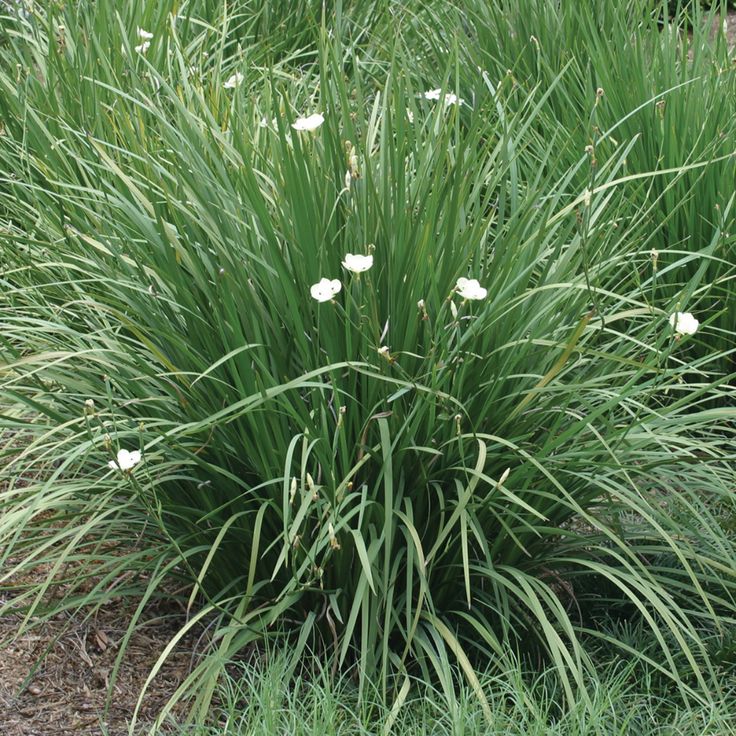
Deer resistant plants for shade
'It’s fairly easy to find deer resistant plants that love the sun, but shade plants can be tricky,' says Knight.
Luckily there are a few great choices to add to shady spots in the garden.
1. Bleeding heart
(Image credit: Getty Images)
Also known as Dicentra spectabilis, bleeding heart is a shade-tolerant herbaceous perennial named for its heart-shaped flowers that is repellant to deer.
Native to woodlands, it pops up in borders in the spring giving much-needed color, before dying back just in time for the summer showstoppers to take its place.
‘Bleeding heart is an old-fashioned plant with plenty of appeal to last,’ says Knight. ‘There are many cultivars now including ‘Golden Hearts Bleeding’ with its chartreuse leaves.
‘Growing to a compact 2ft x 2ft, this beauty tucked in around your hostas just might be able to give them some protection.’
You can grow bleeding heart in USDA zones 3-9.
2. Ferns
(Image credit: Getty Images)
Lush leafy ferns tend to be overlooked by deer, but make a lovely textural addition to a shade garden.
‘I particularly like autumn fern, Christmas fern and Japanese painted fern – their height reaches anything from 10-36 inches tall,’ says Davenport.
‘Ferns prefer moist, well-drained soil high in organic matter.’
Their hardiness is dependent on the variety, but you should be able to find ferns to grow in as low as zone 2.
3. Hellebores
(Image credit: Future)
As well as offering winter interest to gardens, hellebores are also highly deer resistant. Evergreen plants with jewel-colored flowers, they will tolerate dry shade.
‘Depending on the variety, hellebores bloom from early winter into June, and they even bloom in snow,’ says Meyers-Sharp.
It’s easy to learn how to grow hellebores , with varieties suitable for USDA zones 3-9.
‘A lot of gardeners trim off the winter-damaged leaves in spring as the plants begin to bloom, but it’s not necessary,’ says Meyers-Sharp.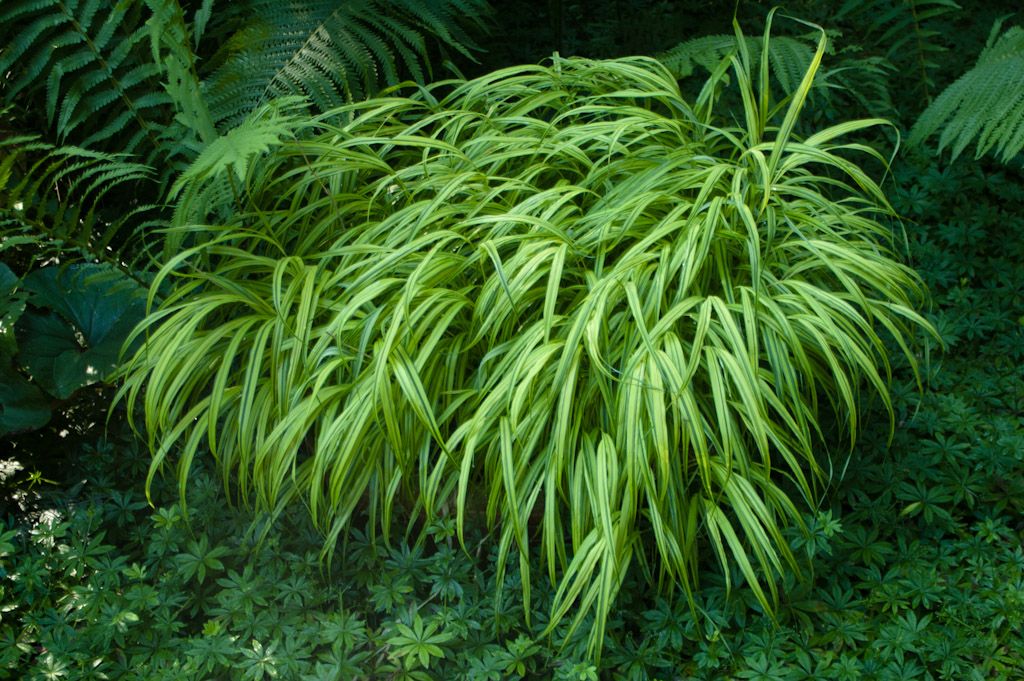
What plants do deer hate the most?
'Deer generally dislike plants with aromatic foliage, such as rosemary and sage,' says Hyland. 'They also avoid statuesque plants such as yews, hollies, and boxwoods.'
Anything spiny or fuzzy will also be unpalatable to deer – so consider a plant's texture.
What plants do deer eat the most?
Deer tend to adapt well to their local habitat and enjoy many of the plants that are grown there. They particularly enjoy eating tulips and hostas.
'In rural areas, they tend to browse crops such as soybeans, grains, vegetables and fruits,' says Davenport.
'However, the bottom line is that no plant is deer-proof. They prefer some plants over others, but they will eat what is available when they have no other choice.'
For more information, see the Clemson Extension Home & Garden Information Center Website and HGIC Deer Resistant Plants for the Landscape- Annuals & Perennials.
As editor of Period Living, Britain's best-selling period homes magazine, Melanie loves the charm of older properties.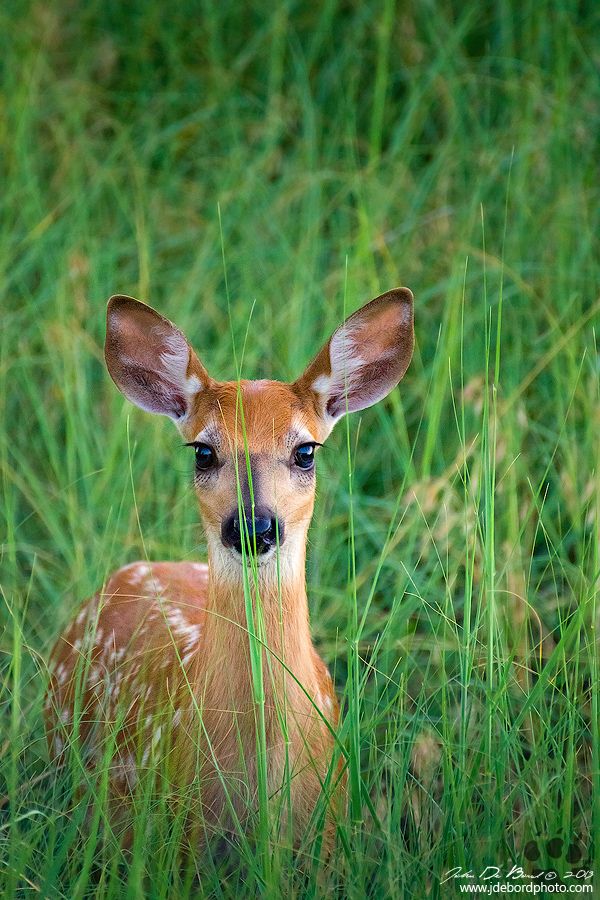 I live in a rural village just outside the Cotswolds in England, so am lucky to be surrounded by beautiful homes and countryside, where I enjoy exploring. Having worked in the industry for almost two decades, Melanie is interested in all aspects of homes and gardens. Her previous roles include working on Real Homes and Homebuilding & Renovating, and she has also contributed to Gardening Etc. She has an English degree and has also studied interior design. Melanie frequently writes for Homes & Gardens about property restoration and gardening.
I live in a rural village just outside the Cotswolds in England, so am lucky to be surrounded by beautiful homes and countryside, where I enjoy exploring. Having worked in the industry for almost two decades, Melanie is interested in all aspects of homes and gardens. Her previous roles include working on Real Homes and Homebuilding & Renovating, and she has also contributed to Gardening Etc. She has an English degree and has also studied interior design. Melanie frequently writes for Homes & Gardens about property restoration and gardening.
15 Best Deer-Resistant Plants and Flowers
Every item on this page was chosen by The Pioneer Woman team. The site may earn a commission on some products.
Try marigold, lavender, lamb's ear, and other varieties.
By Arricca Elin Sansone
nkbimagesGetty Images
You love digging around in your garden, planting flowers, shrubs, and trees to beautify your landscape. What's not so nice to discover your favorite plants have been gnawed on by the neighborhood deer!
What's not so nice to discover your favorite plants have been gnawed on by the neighborhood deer!
Sure, they have to eat, too, but does it have to be your yard? Although you can try repellants, research says they're only effective about half the time and you will need to reapply them regularly. So if you're looking for advice on how to keep these animals out of your garden, try deer-resistant plants.
While no plant is considered "deer proof," many are less tasty to deer so they're less likely to get nibbled. For starters, they tend to avoid plants that have highly scented foliage or a fuzzy texture. (Our suggestion: learn how to grow lavender, which is a variety included on this list.) You can also discourage deer by not planting their favorites such as hostas, daylilies, azaleas, and arborvitae. When shopping, read the plant tag so you know how much sun or shade a plant needs. (Full sun is considered 6 or more hours of direct sunlight, while part sun is about half that. ) Also, make sure a plant will survive winters in your USDA plant hardiness zone. Adding a 2 to 3 inch layer of mulch also will maintain moisture and control weeds, too, to give your plants a healthy chance at thriving.
) Also, make sure a plant will survive winters in your USDA plant hardiness zone. Adding a 2 to 3 inch layer of mulch also will maintain moisture and control weeds, too, to give your plants a healthy chance at thriving.
It's important to remember, however, that if there is a high population of deer, insufficient food sources, or a hard winter, they will eat pretty much anything in your garden to survive! Still, if you're determined to keep them at bay, explore our favorite deer-resistant plants for your garden.
gladassfannyGetty Images
1 of 15
Weigela
Oodles of bright flowers attract pollinators such as hummingbirds, but deer tend to leave this shrub alone. Some types of weigela rebloom throughout the summer.
SHOP NOW
AlpamayoPhotoGetty Images
2 of 15
Catmint
Catmint grows in all soil types, is drought tolerant, and blooms for weeks and weeks in mid to late summer. The purple spikes of flowers of this perennial are set against pretty, silvery foliage that has a slight minty scent deer don't like.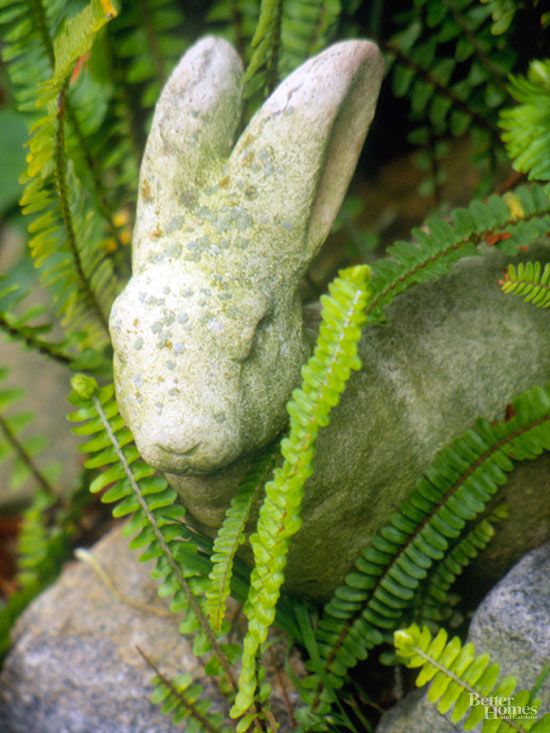
SHOP NOW
Jacky Parker PhotographyGetty Images
3 of 15
Bee Balm
Bee balm is a perennial that pollinators love! But deer usually steer clear of its highly-scented leaves. Look for new well-behaved varieties that stay in clumps and won't overrun your garden.
SHOP NOW
Jacky Parker PhotographyGetty Images
4 of 15
Lavender
This classic perennial has beautiful, delicate foliage and deep purple spikes of flowers. Nothing beats lavender's romantic scent, which deer don’t like.
SHOP NOW
Darrell GulinGetty Images
5 of 15
Heuchera
These pretty perennials are grown more for their brilliant foliage, rather than their tiny flower spikes in midsummer. Heuchera come in a range of gorgeous shades from burgundy black to chartreuse.
SHOP NOW
STSVIRKUNGetty Images
6 of 15
Spirea
This sturdy shrub isn't a favorite of deer, but its bright foliage and clusters of pretty flowers make it reliable for landscaping or foundation planting. Some new varieties of spirea are reblooming.
Some new varieties of spirea are reblooming.
SHOP NOW
skymoon13Getty Images
7 of 15
Japanese Painted Fern
Shady spots in your garden will shine with these elegant ferns. Plant them in masses for best effect; deer almost never bother them.
SHOP NOW
KATRIN RAY SHUMAKOVGetty Images
8 of 15
Cranesbill
Also called perennial geranium, this super-cold-hardy plant has pungent foliage deer don't like and delicate blooms in mid to late spring. Some types bloom sporadically all summer long.
SHOP NOW
Srdjan StepicGetty Images
9 of 15
Lantana
Lantana is a tough-as-nails plant with bright flowers all summer long. Pollinators adore it, but deer don't like its somewhat prickly texture. It's considered an annual in cold climates but perennial in warmer parts of the country.
SHOP NOW
bauhaus1000Getty Images
10 of 15
Dusty Miller
The fuzzy silver foliage of dusty miller is not enticing to deer.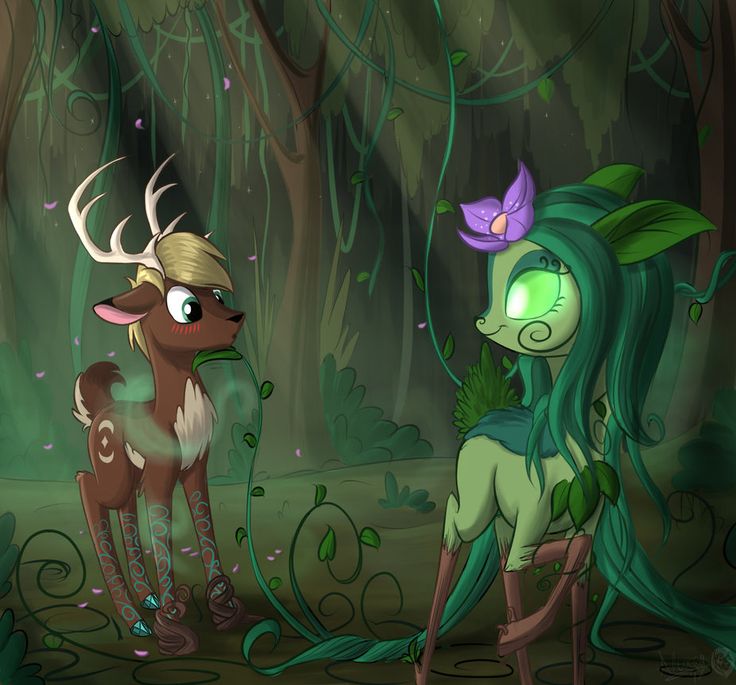 Still, it makes an attractive upright accent plant when combined with other annuals in containers or beds.
Still, it makes an attractive upright accent plant when combined with other annuals in containers or beds.
SHOP NOW
kuenlinGetty Images
11 of 15
Angelonia
Also called summer snapdragon, this long-blooming annual is usually ignored by deer. It comes in every color of the rainbow, so it's smashing in containers or beds.
SHOP NOW
Orest LyzhechkaGetty Images
12 of 15
Marigold
These cheerful annuals have been popular since your grandmother's day because they're super-hardy, they bloom all season long until a hard frost, and they are easy to grow. Their scented foliage is not tasty to deer.
SHOP NOW
Jacky Parker PhotographyGetty Images
13 of 15
Butterfly Bush
Butterflies will flock to this shrub, and deer won't! Look for new types that are more manageable in size and aren't invasive.
SHOP NOW
Oksana ChaunGetty Images
14 of 15
Sweet Alyssum
Sweet alyssum is a beautiful annual that looks lovely draping out of pots and containers or spilling over the edges of walkways or walls.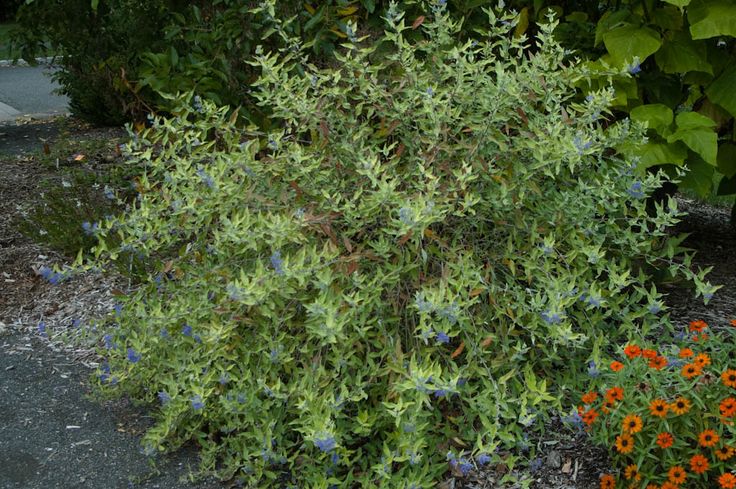 It's a pollinator magnet, but not preferred by deer because of its honey-scented blooms.
It's a pollinator magnet, but not preferred by deer because of its honey-scented blooms.
SHOP NOW
Anastasiia Burlakova
15 of 15
Lamb's Ears
Besides having a very cute name, the little rounded, fuzzy leaves of the lamb's ear plant aren't appealing to deer. Plant this perennial in mixed borders or along walks.
SHOP NOW
Here's How to Plan Your Vegetable Garden Layout
Arricca Elin Sansone Arricca SanSone has written about health and lifestyle topics for Prevention, Country Living, Woman's Day, and more.
How to scare away deer from the site?
Deer are herbivores that can cause damage to the site. They love to eat vegetables and flowers, but also willingly eat seedlings of fruit and ornamental trees. Intruders are often complained about by gardeners whose crops are very close to forests. However, it often happens that they can travel quite a distance in search of food. What needs to be done so that the site is not destroyed by them? How to effectively scare them away? Why is soap helpful? Let's see.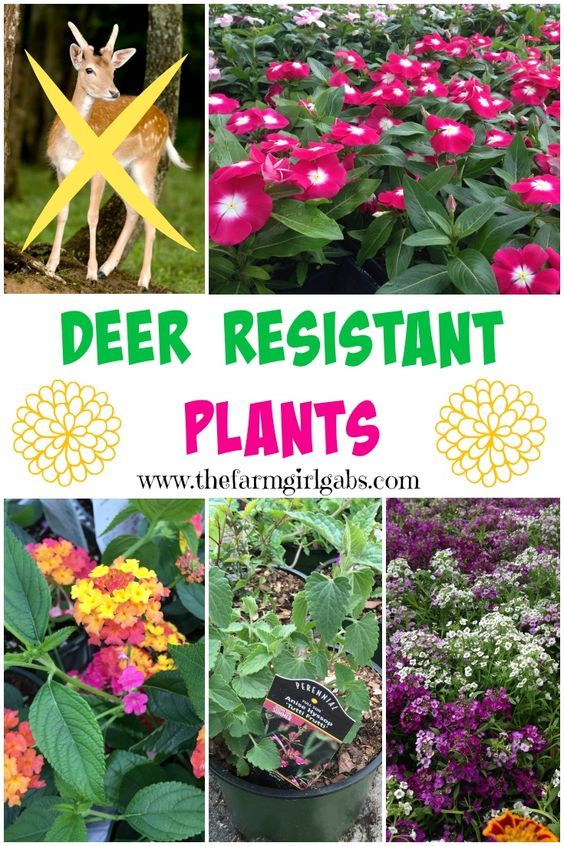
Fence
The most common and probably the best way is to invest in a decent fence. Unfortunately, for the fence to be indestructible, it must be really high. The hunters say that the obstacle cannot be lower than 2.5 m, because a hungry deer can jump over it. Foresters argue that it is worth investing in an efficient forest grid.
Deer protection
Deer are very shy animals, so it's worth using it. You don't have to invest in expensive devices because there are cheap ways to contain them. Among cultivated plants, it is enough to drive in rods on which empty jars are to be placed; driven by gusts of wind, they make a characteristic sound. You can also place other items on fruit trees such as wind chimes or windmills. If, despite efforts, deer still visit the site, it is best to purchase special repellents from garden stores or online auctions; some of them have a range of up to 150 m.
Unusual ways to deal with deer
There are also special ways from deer that visit our sites.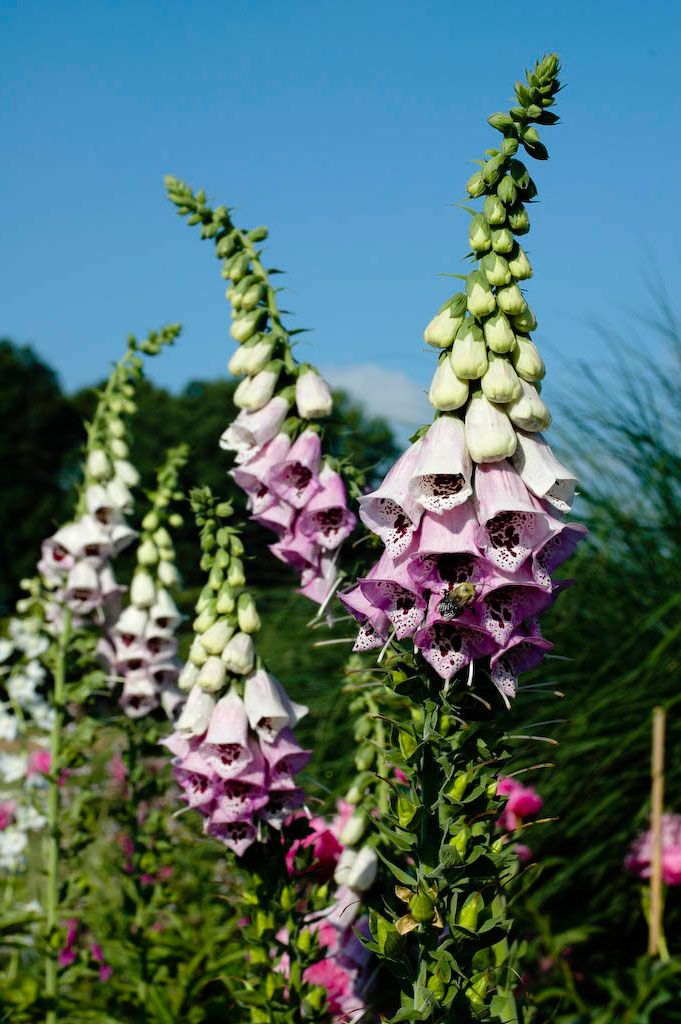 These magnificent animals have a sensitive sense of smell, which, combined with their shyness, can be used with success. It is enough to put objects that are inextricably linked with a person. What will be useful? Sweaty clothes - a specific smell will effectively prevent frequent visits. You can use human hair; it is enough to put them in stockings - this will effectively deter hungry deer. However, it is worth remembering that the “human” smell evaporates quickly, and from time to time items need to be replaced. Another proven method is to distribute scented soaps on the site. Just cut a few cubes and place the particles between the plants and around the fence at a distance of about 3 m.
These magnificent animals have a sensitive sense of smell, which, combined with their shyness, can be used with success. It is enough to put objects that are inextricably linked with a person. What will be useful? Sweaty clothes - a specific smell will effectively prevent frequent visits. You can use human hair; it is enough to put them in stockings - this will effectively deter hungry deer. However, it is worth remembering that the “human” smell evaporates quickly, and from time to time items need to be replaced. Another proven method is to distribute scented soaps on the site. Just cut a few cubes and place the particles between the plants and around the fence at a distance of about 3 m.
natural methods
Although deer are not picky, there are plants that are not their delicacy. It is worth knowing which of them can be planted on the site, and thereby get rid of the frequent visits of guests. It is best to place on the outskirts of the site. Inedible plants for deer are: sage, lavender, begonia, daffodils, irises, marigolds, zinnia, boxwood, pine and spruce. In addition, these animals do not like intense aromas, so several heads of garlic or onions can be laid out in the garden. It is also worth hanging hot peppers on the fence; after eating them, they will associate your site with an unpleasant taste. It turns out that spraying egg slurry will be quite useful in the fight against deer. It is easy to prepare a safe and natural remedy: six eggs need to be mixed with two liters of water. Such a mixture should be used on the site. However, it doesn't work all the time; you should repeat the above procedure from time to time.
In addition, these animals do not like intense aromas, so several heads of garlic or onions can be laid out in the garden. It is also worth hanging hot peppers on the fence; after eating them, they will associate your site with an unpleasant taste. It turns out that spraying egg slurry will be quite useful in the fight against deer. It is easy to prepare a safe and natural remedy: six eggs need to be mixed with two liters of water. Such a mixture should be used on the site. However, it doesn't work all the time; you should repeat the above procedure from time to time.
Other Methods
If none of the above methods help with deer, you should invest in an "electric shepherd". The wire should be placed at three different heights: 25 cm, 60 cm and 100 cm. Touching such a fence will cause a gentle effect on the animal; this will effectively deter them and discourage future visits. Proper installation creates a magnetic field that is not perceived by humans, but will prevent deer from attempting to approach the site.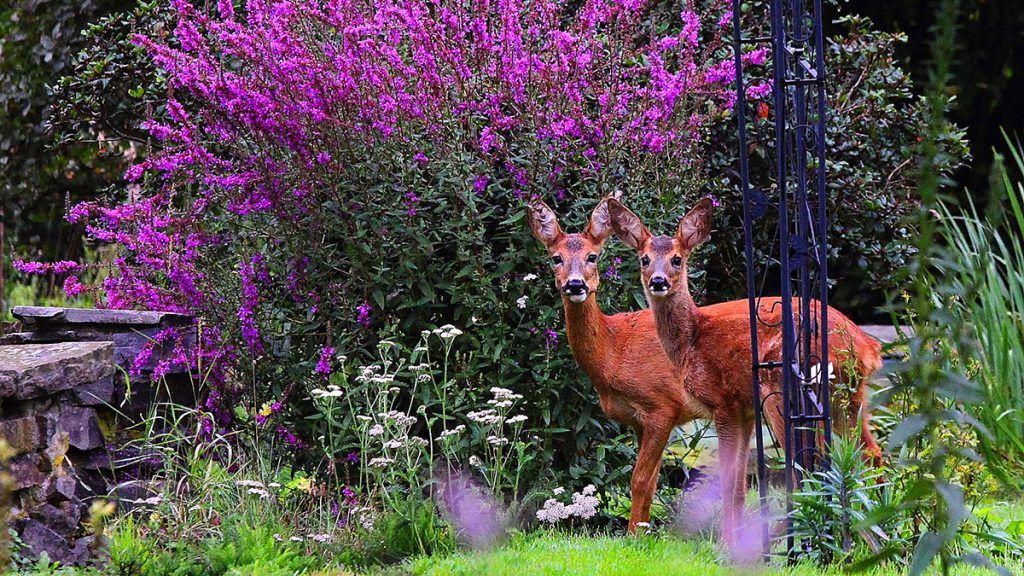
Top 5 Deer Repellent Review & Buyer's Guide
Deer are always looking after all sorts of plants, and your well-groomed garden is no exception. As a result, they can destroy your plants or vegetables, leaving your garden in complete disarray. For this reason, you need something that will always keep deer at bay. Deer repellents are the best option for you.
Repellents come in many forms. Some come in granule form, while others come as a concentrated liquid that you will need to dilute and spray on the plants.
When choosing the best repellent, always choose an environmentally friendly repellent and one made from natural ingredients so as not to harm your pets or children if you have them at home.
Choosing the best deer repellant can be tricky given that there are many products on the market from different manufacturers. So to make your shopping experience easier, our experts have tested and reviewed the best deer repellants that are highly effective and that you might want to consider.
Without chemical or poisonous ingredients
can scare deer up to 3-4 months
2. Enviro Pro 1025 Replaid Forms
7 based on biological scents
protects up to 5,400 square feet
3.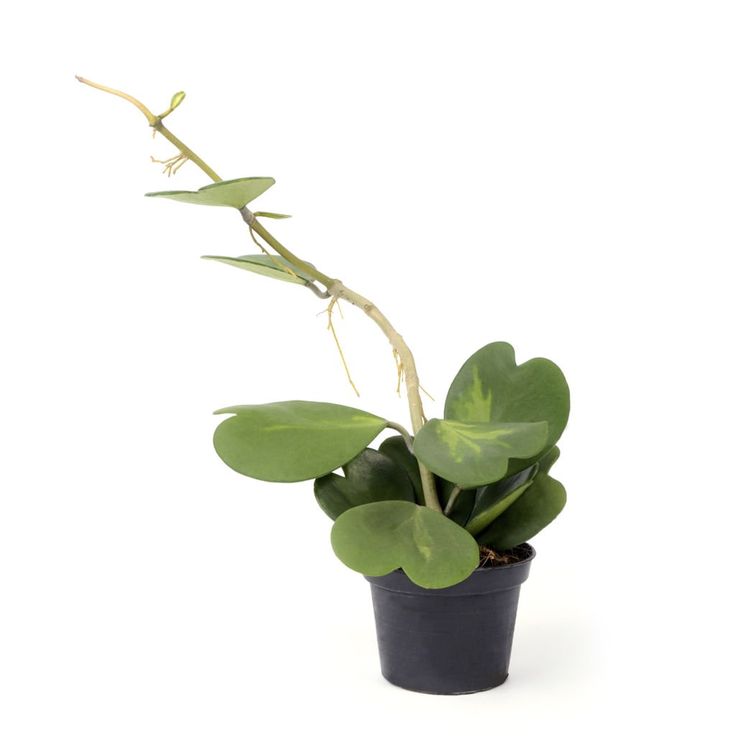 Deer repellent I Must Garden
Deer repellent I Must Garden
-
Strong stickers
-
ready to use spray
-
Natural ingredients and vegetable oils
taste and odor repellents
best applied at 35-85 degrees Fahrenheit
5. PlantSkydd repellates for animals
-
100% dried blood
-
Convenient Sheker-Kuvshin
-
Frequencies of use-6-8 weeks.

1. Concentrated repellent from deer Out
Technical characteristics:
97% only
| value for money Pros :
Cons:
Final double: You will have a good smelling deer repellant in your garden. This repellent cannot affect or disturb your breath as it has a minty-fresh scent that you will love. The two natural stickers ensure that whenever you spray the repellent it will stay active when the weather is favorable and your garden will be permanently protected from deer. In addition, deer repellant cannot harm your pets or children when they walk around the yard or garden. The smell itself is enough to keep deer away without biting your plants. | Dimensions | 12 x 12 x 16 inch |
Purconductive force
9000 Scoop from a bucket and sprinkle.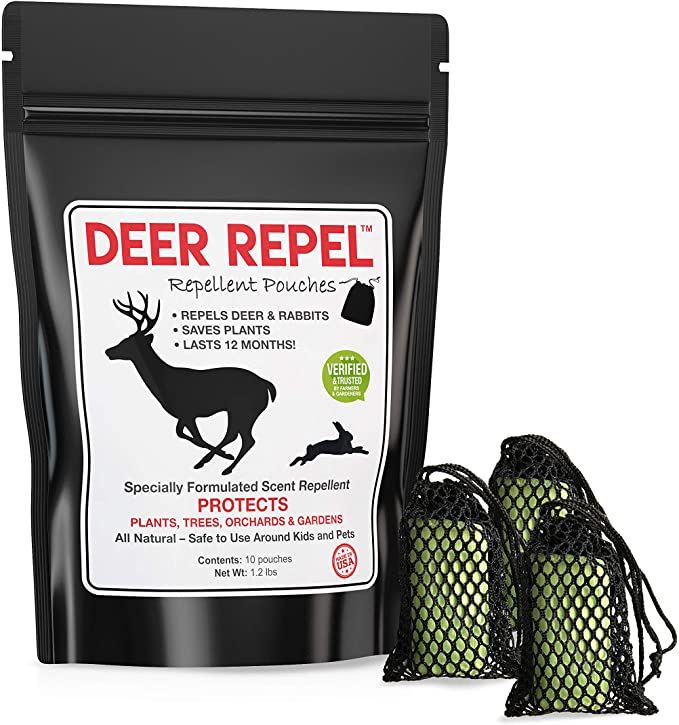
Cons:
- Very strong packaging that can be a problem for older people or people with weak muscles to open.
- Expensive, especially since it needs to be reapplied after a few months or after heavy rain.
Final take:
This deer repellent has a very unpleasant odor for wildlife. It smells like the remains of a dead deer. This keeps the deer away from your garden. The active ingredients are high nitrogen organic nutrients and do not contain synthetic additives or poisons. This makes it safe to use with pets as long as you have them separate from dogs. The repellent is also easy to use. You scoop directly from the bucket and spray it around the perimeter you want to protect from deer.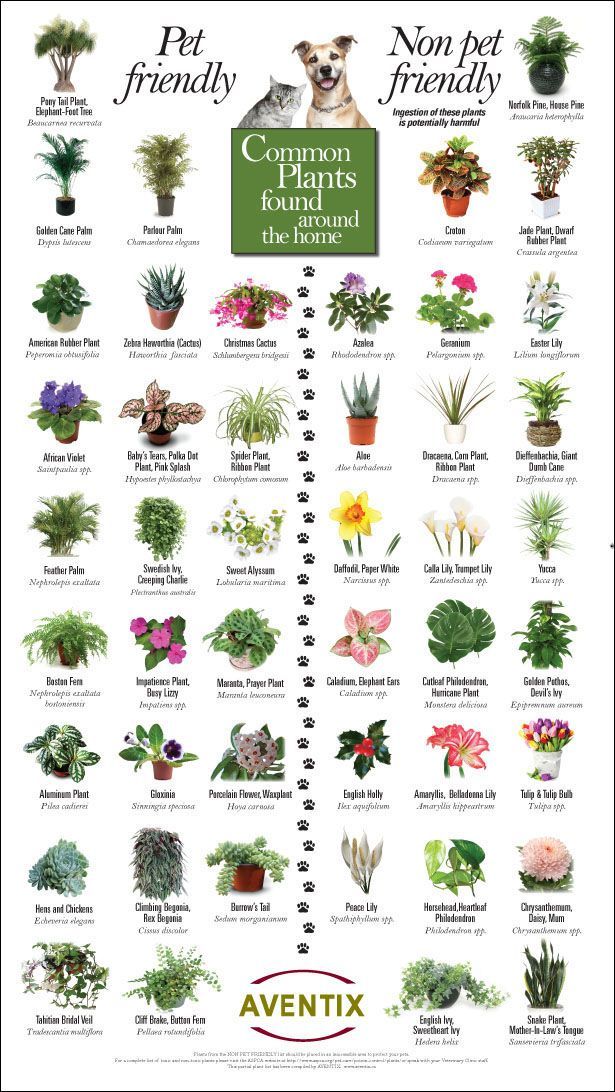 The smell coming from the pellets will deter deer from returning to your garden.
The smell coming from the pellets will deter deer from returning to your garden.

Cons:
- Takes time to plant as it can be washed away by heavy rains.
- After using 70 to 80 percent of the contents, it will be a little difficult to use the spray as you will experience an irregular amount of spray.
- A bit pricey for the features it offers.
Final take:
This lovely smelling repellant is just what you might need to keep deer at bay from your various plants and vegetables. Unlike other deer repellants, this one is made from concentrated vegetable oils that greatly irritate the deer's sense of smell. You also don't have to worry about your pets or children when using this repellant as it is made from natural ingredients that are eco-friendly and won't harm them. It is easy to use as you apply it to dry plants and let it dry for at least one hour before spraying or raining.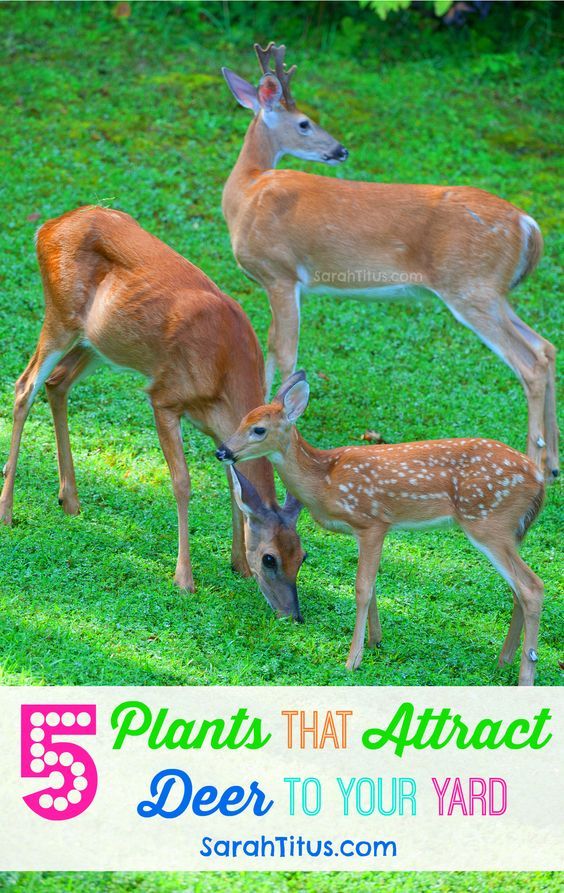 Be sure to spray every 30 days to control deer deterrence.
Be sure to spray every 30 days to control deer deterrence.
Dimensions
11.5 x 8.2 x 6.1 inches
Purmonds
Multilateity
Calus 9000 : After you spray your plants, they don't wash off easily.

Cons:
- Has an extremely strong odor that can also be offensive to users but dissipates soon.
- Washes off after heavy rain.
Final take:
This deer repellant is sure to work well in your garden. To be effective, always spray dry plants between 35-85 degrees Fahrenheit. Covering all surfaces front and back, let it dry for at least 6 hours before watering or before it rains. What's more, this repellent can be used all year round without worrying about being washed away by rain or watering. 90 Dimensions
13 x 8 x 5 inches
Repulsive force
Multilateity
Product and quality ratio
PLASS ) porcine and/or bovine).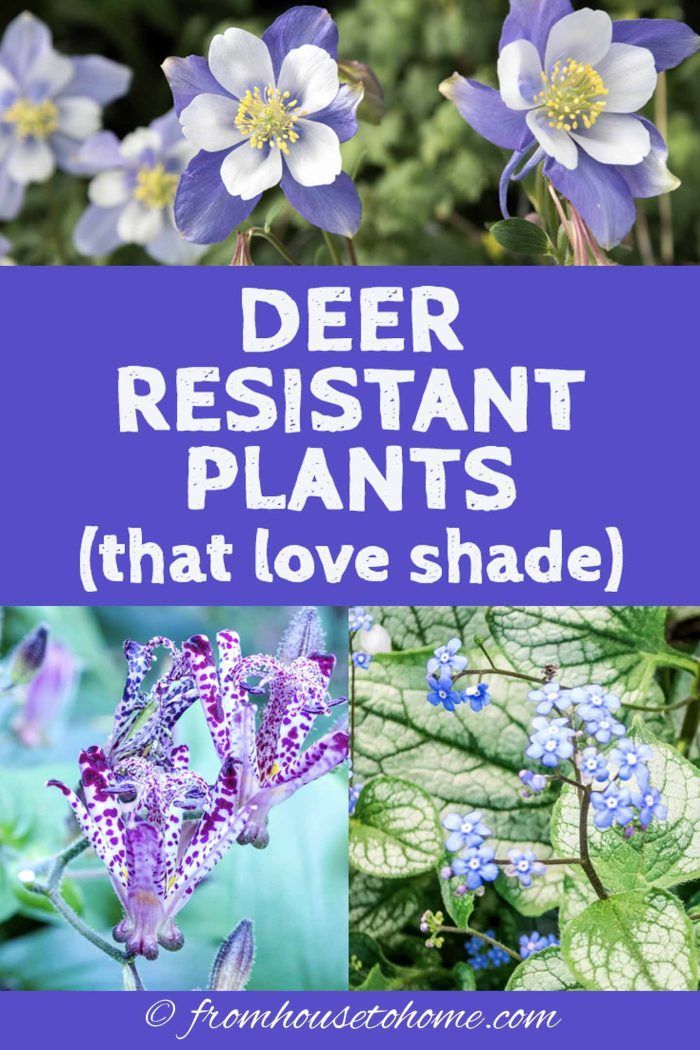
Cons:
- A 3.5 lb bag seems too short to cover the recommended 1,750 square feet of coverage, especially if you need to reapply after heavy rain.
- May stain stones and other concrete surfaces.
Final take:
This deer repellant is very effective for your garden and plants.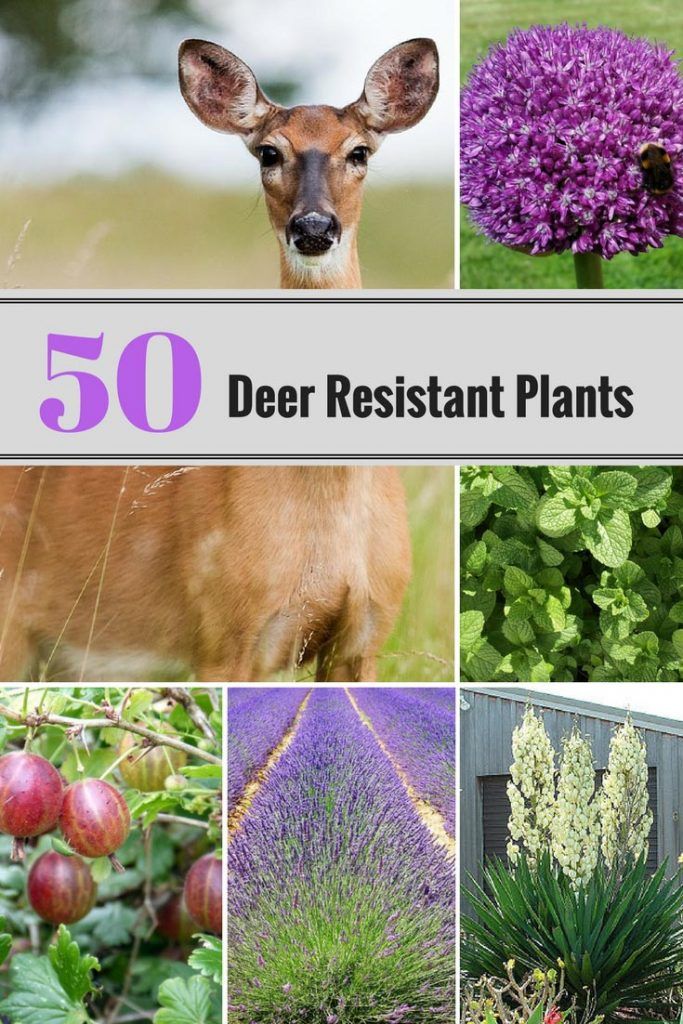

 Hence, this repellent is very effective.
Hence, this repellent is very effective. 

